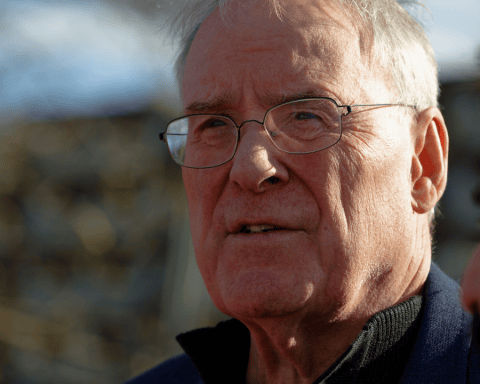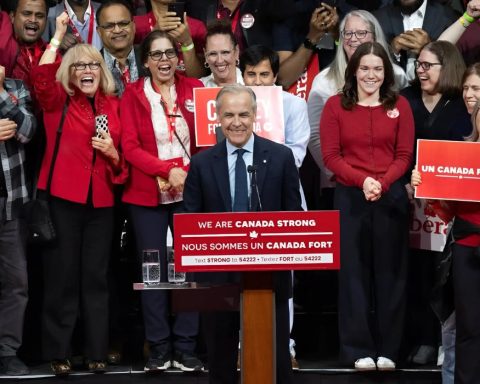A key goal laid out in the federal government’s recent speech from the throne was to “build back better to create a stronger, more resilient Canada.” In our view, “building back better” must include placing growing clean industries (such as electric vehicle manufacturing and zero-carbon power generation) at the centre of Canada’s industrial policy. At the same time, our social contract must be rejuvenated to take care of our young and old with affordable and accessible childcare and long-term care. The sketch provided by the throne speech suggests the government is on the right track – but it did not explain how we will be able to afford the significant investments needed to make the vision into a reality. Those details will be revealed in an upcoming budget or economic statement, but there are a number of fiscal tools at Ottawa’s disposal to make a clean and caring economy a reality.
A decent roadmap
If we look at the speech using a clean economy and caring lens, there were four essential lines. The commitment that “climate action will be a cornerstone of our plan to support and create a million jobs across the country” is a game-changing update to the government’s narrative around climate change. The related promises to support energy-efficient building retrofits and to launch a new fund to attract investments in zero-emission product manufacturing suggest that Canada may be on the way to having a clean industrial strategy.
In stating that “the government will make a significant, long-term, sustained investment to create a Canada-wide early-learning and child-care system,” the feds recognized that the majority of job losses (63 percent) caused by the pandemic-induced economic crisis have affected women, many of whom may not be able to return to the workforce without better child-care options.
The government’s intent to wave off the fiscal hawks and continue to dig deep to help us build back better was made clear when it noted that “this is not the time for austerity.”
The government further signaled it is serious about building back better by saying it would work with the provinces and territories to “make the largest investment in Canadian history in training for workers,” with the first item listed as “supporting Canadians as they build new skills in growing [read ‘green’] sectors.”
What was missing from the throne speech?
On the green recovery side (a package of investments and regulatory reforms to relaunch the economy on the back of green industries), there was a fair bit of detail on the new investment fund meant to support zero-emission vehicles and batteries – which will largely benefit central Canada. But there was scant mention of how to rev up the low-carbon resource sector in the West. This includes (in order of technology readiness): sustainable biofuels, hydrogen, and the potential bonanza of extracting carbon fibres from bitumen.
The immense potential for the farming and forestry sectors to contribute to climate solutions was given just one line, referring to “farmers, foresters, and ranchers as key partners in the fight against climate change, supporting their efforts to reduce emissions and build resilience.”
There was no mention of how to ensure that Canadians reap our fair share of capital gains and intellectual property rights in return for the billions of dollars of public investment about to be directed at the recovery. It would have been nice to see some indication of how the government plans to ensure that our pension funds get the inside track on these growth investment opportunities in Canadian enterprises. There was also a missed opportunity to lay down markers for more democratic ownership models, including provisions to encourage employee-owned businesses and co-ops.
The next economic update and a nation building strategy
Now is the time for the federal government to go “all in” for a caring economy and a green recovery by using its fiscal power and monetary sovereignty to make the investments that will expand, mobilize and redeploy our productive capacity for building the Canada we want and the Canada we need for the 21st century.
On a long-term basis, we are going to invest an additional 0.5 percent of GDP into the caring economy to make affordable and quality child care and elder care a universal reality. And over the next five years, to ensure that Canada plays to its full potential in seizing clean-growth markets, we will invest an additional one percent of GDP per year to build up the clean economy.
How are we going to pay for it? We can issue bonds today that will be directed at investments in affordable child care, long-term care for seniors and a green recovery, and we can afford to do it without raising tax rates. We can do this because these programs stimulate economic activity that will generate future government tax revenue that will be greater than the interest on the bonds.
Here’s how it works: affordable child care creates jobs to deal with the “she-cession” and boosts labour force participation overall, which in turn fuels higher growth and tax revenues. A child care program (building on lessons learned from the Quebec model) would require additional federal investment of $80 billion over the next 10 years. On an annual basis, we estimate this investment would represent 0.35 percent of GDP (assuming 50-50 cost-sharing with provinces and territories). That expenditure in turn would be offset by higher economic growth – by reducing the gender workforce gap, GDP would go up a corresponding 2.4 percent by our estimates (based on an IMF paper extrapolating from the Quebec child care experience). This would represent an increase in federal revenues of $8.3 billion per year (or 0.36 percent of GDP, using the 15 percent federal revenue-to-GDP ratio).
Securing dignified long-term care as an element of universal health care almost certainly requires setting up a national long-term-care insurance program, with a strong community and home care component, according to the National Institute of Aging. Setting this up will likely require significant federal government contributions in the order of an additional 0.25 percent of GDP, assuming a matching contribution by provinces and territories. Together, this would raise Canada’s spending on publicly funded long-term care from 1.3 to 1.8 percent of GDP, in line with our OECD peers, and take some of the load off the 35 percent of Canadians who balance paid work with unpaid caregiving.
The federal contribution would be offset by higher levels of GDP. Corporate Knights estimates that GDP would rise by one percent, by factoring in a 35 percent productivity boost among the Canadians who currently balance paid work with unpaid caregiving, plus the economic boost associated with creating the new long-term care spaces, as estimated by the Conference Board of Canada. Savings in the order of 0.12 percent of GDP would arise from the hospital beds freed up through increased provision of long-term-care spaces and in-home-care support services, which are 80 percent more cost-effective.
Meanwhile, the government could support technological innovations and attract large-scale private investment into clean-growth areas that align with Canada’s strengths by issuing low-cost, long-dated sovereign bonds (issued now to lock in low interest rates). The European Union has a similar system. Corporate Knights economists estimate this would create a new engine of growth based on boosting the growth of clean industries, raising Canada’s 2030 GDP levels between five and 10 percent. At seven percent GDP growth, federal tax revenues would increase by 1.1 percent of GDP, enabling us to manage our sovereign debt loads and sustain a clean and caring economy over the coming decades.
Table:
![]()
Sources: Corporate Knights estimate based on Building Back Better Synthesis Report, Canadian Institute for Health Information, Caregiving and Care Receiving by Statistics Canada, Conference Board, Finance Canada, IMF, National Institute on Ageing, RBC Economics, Scotiabank Economics.
Investing in a caring and green recovery will expand, mobilize and redeploy Canada’s productive capacity, enabling us to manage the sovereign debt and sustain a clean and caring economy over the coming decades.
Toby Heaps is the co-founder and CEO of Corporate Knights.
Céline Bak is the president and founder of Analytica Advisors.
Ralph Torrie is the president of Torrie Smith Associates, and a senior associate with the Sustainability Solution Group.
This article was originally published by Policy Options.





